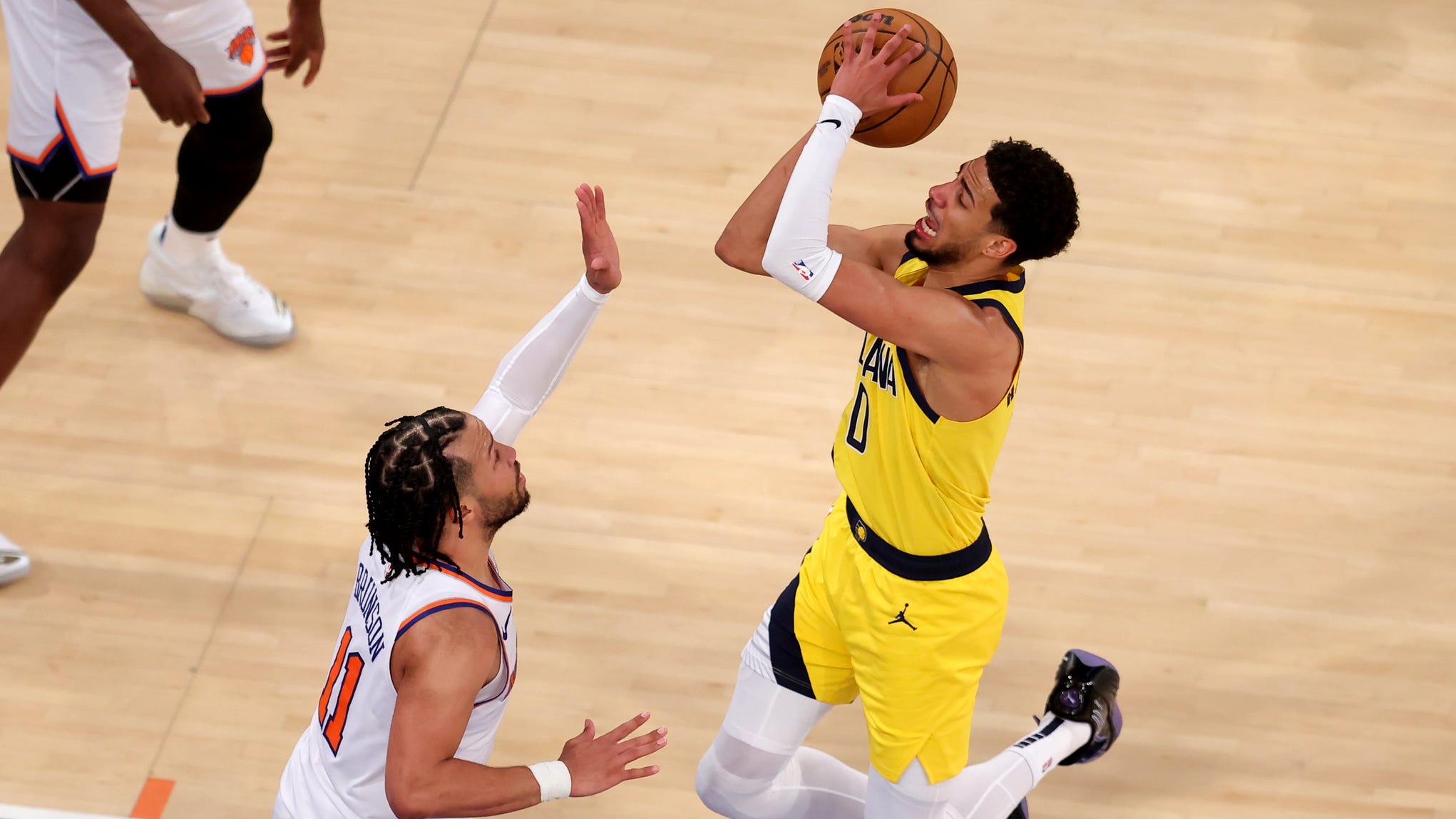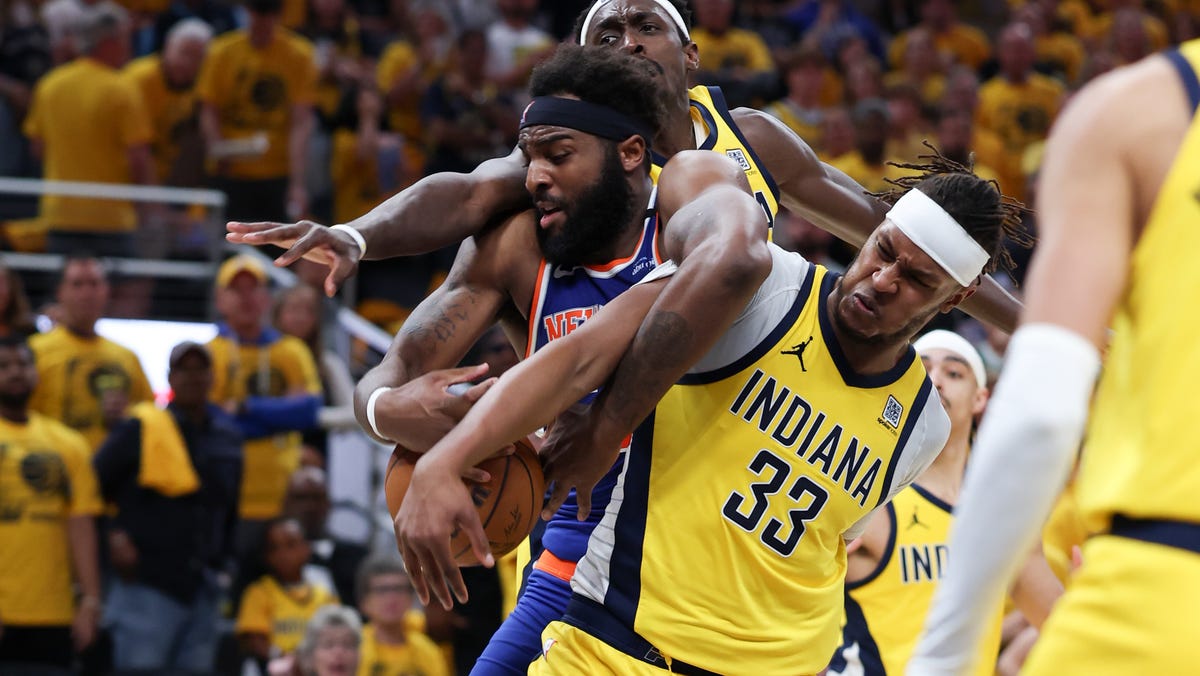
Thunder knock off Knicks, will battle Thunder for NBA Finals crown
USA TODAY Sports’ Lorenzo Reyes breaks down how the Indiana Pacers fought their way into the NBA Finals.
Sports Pulse
The New York Knicks will have plenty of time to dissect what went wrong in the Eastern Conference finals.
New York was trying to make its first NBA Finals since 1999, and, after being eliminated in consecutive years by the Indiana Pacers, the Knicks must be proactive and honest about changes they will need to make to break through.
For one, the team relies so significantly on All-Star point guard Jalen Brunson that he’s often tasked with saving New York. But that’s just the beginning.
Five reasons why the New York Knicks lost the Eastern Conference finals against the Indiana Pacers:
1. Going down 0-2 at home
Teams simply cannot gift games during the postseason, especially during the conference finals. Game 1, when the Knicks held a nine-point lead with 58.8 seconds left to play, was the epitome of a missed opportunity. The Knicks actually held a 17-point lead midway through the fourth quarter, but they became complacent and could not answer Indiana’s pace. It was bad enough for the Knicks to drop the series opener at home, but it was even worse when they dropped Game 2 in the Garden to fall behind 0-2 headed to Indiana.
2. Trying to match Indiana’s tempo
From Game 1, it appeared that Knicks coach Tom Thibodeau’s preference was to try to match Indiana’s speed, rather than to grind games down. It would turn out to be misguided. The Knicks ranked 27th in the regular season in pace, generating 97.64 possessions per 48 minutes. Indiana ranked seventh (100.76). While the Knicks sometimes did have success against the Detroit Pistons and Boston Celtics in the earlier rounds when pushing tempo, New York would’ve been far better off slowing the game against the Pacers because this was exactly how Indiana wanted to play.
3. Turnovers
The Knicks committed more turnovers than the Pacers in all but one of the games, and New York lost the turnover margin overall, 93-75. In itself, that’s pretty bad, but it gets worse. Because of the speed with which the Pacers play, those turnovers turned into easy offense: the Pacers posted a crushing 140-61 advantage in points off turnovers throughout the series.
4. Transition defense
The previous point feeds somewhat into this. But whether it was off of turnovers, missed shots or even out of inbounds passes on made attempts, New York did not sustain precise focus on spotting Pacers leaking out in transition. While physically demanding, Thibodeau could’ve done more to tweak strategy, insisting that players drop back to prevent fastbreak chances. The Pacers registered more fastbreak points than New York in every game this series. Frankly, that was always going to be the likely outcome; the margin is what was concerning. The Pacers scored 106 fastbreak points across the six games, while the Knicks put up just 48.
5. Tom Thibodeau’s inconsistent use of the bench
It wasn’t until Game 3 of the series, after the Knicks were already desperate and down 0-2, that Thibodeau tweaked the rotation to match up better with Indiana. Thibodeau has always been a coach set in his ways, and his reluctance to go with fresher legs — against a team that sprints up and down the floor — was baffling. This is magnified further because guards Delon Wright and Landry Shamet are known to be plus-defenders, something New York sorely needed earlier in the series when Indiana’s guards were scoring at will. Thibodeau did receive some credit when he eventually extended his rotation; it came far too late.










